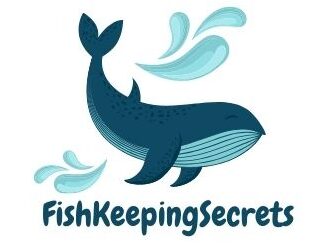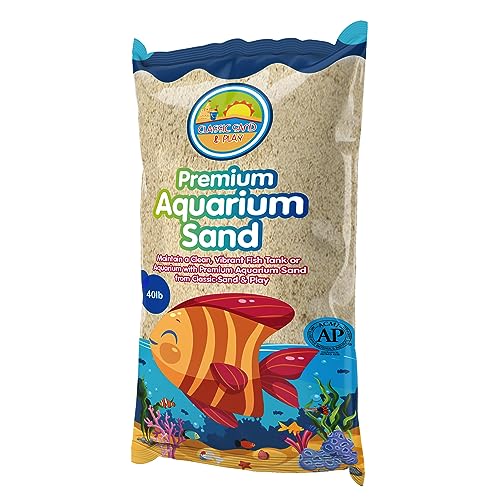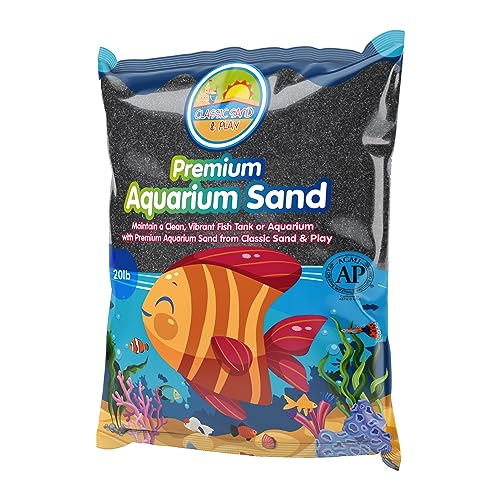10 Best Live Sands For Saltwater Aquarium [2025]
This post contains affiliate links. As an Amazon Associate, we earn from qualifying purchases.
Finding the best live sands for your saltwater aquarium can be a daunting task, given the myriad of options available and the specific needs of your aquatic environment. To simplify your search, we meticulously shortlisted ten top products based on performance, quality, and user feedback. Our carefully curated list is designed to save you time and hassle, ensuring you choose the ideal live sand that enhances the health and beauty of your aquarium.
Top 10 Live Sands For Saltwater Aquarium In The Market
Live Sands For Saltwater Aquarium Review
- Unsurpassed buffering capability - keeps pH at a stable 8.2
- 98% pure calcium carbonate - no impurities like other sands
- Naturally renewable oolitic aragonite from a sustainable source
- Pisces is the only company that has a lease with The Bahamian government to harvest aragonite
- Intended for use with saltwater/marine aquariums.
- Unsurpassed buffering capability - keeps pH at a stable 8.2
- 98% pure calcium carbonate - no impurities like other forms of aragonite
- Naturally renewable oolitic aragonite - sustainable sourced
- Phosphate free
- The only brand with a lease from The Bahamian government to harvest aragonite
- Seeded with bio-active live nitrifying bacteria
- Use as a primary substrate or mix with Aqua Natural Sugar White Sand
- Cycles aquarium instantly
- Great for aquatic plants
- Natural tan sand: Designed to replicate freshwater riverbeds with a neutral tan color that enhances the look of plants, rocks, and fish in any aquarium.
- Smooth, fish-safe texture: Fine grain structure is gentle on bottom-dwelling species, creating a safe, natural-feeling environment for aquatic life.
- Maintains water balance: Helps support stable pH levels in freshwater aquariums, contributing to a consistent environment for plants and fish.
- Free from additives: Contains no artificial dyes, paints, coatings, or chemical residues—just clean, natural sand for a healthy aquarium setup.
- Resists compaction: Prevents channeling and uneven settling beneath rocks or décor, supporting even water flow across the aquarium base.
- Fine Aquarium Sand – A must-have for keeping fish tanks cleaner, our salt and freshwater aquarium sand helps you maintain a cleaner, clearer environment while setting the perfect backdrop for colorful fish, live plants, and tank enhancements.
- Washed and Kiln Dried Sand – Compatible with personal or commercial aquarium sand filters our fresh and salt aquarium sand is pre-washed to remove any excess impurities or substrate to keep water beautifully pristine inside your tank.
- Animal and Plant Safe Sand – Along with supporting your sand aquarium filter our fresh and saltwater aquarium sand is safe for different fish types as well as plants and other fish tank or aquarium decor, so you can use it with all your fishy friends.
- Beautifully Soft Colors – Great for those who want to maintain a more neutral or natural fish tank our aquarium sand comes in seven different color options to create a more engaging color contrast against other tank accessories, items, or plants.
- No Dust or Cloudiness – Many different aquarium sand options aren’t pre-washed or cleaned which means they immediately cause cloudiness in your tank, especially if you have animals that dig or burrow, but ours always maintains a clean vibrance.
- Seeded with bio-active live nitrifying bacteria
- Cycles aquarium instantly
- Contains bio activated live nitrifying bacteria
- Great for aquatic plants
- Unsurpassed buffering capability - keeps pH at a stable 8.2
- Phosphate free
- 98% pure calcium carbonate - no impurities like other forms of aragonite
- Naturally renewable oolitic aragonite - sustainable sourced
- Genuine Marine aragonite - not land mined
- Triple washed and kiln dried - this is one of the cleanest aquarium sands available, no toxins, no foreign matter, 100% natural sand
- 0.5 - 1mm in size - it has a dense composition and zero fines so does not blow around in your tank
- Ethically and sustainably sourced under license in New Zealand
- This sand has a stunning OFF-WHITE sugar color and texture, it brightens up your tank and contrasts well with aquarium plants and goes with any décor
- Also great for vivariums and terrariums
- Fine Aquarium Sand – A must-have for keeping fish tanks cleaner, our salt and freshwater aquarium sand helps you maintain a cleaner, clearer environment while setting the perfect backdrop for colorful fish, live plants, and tank enhancements.
- Washed and Kiln Dried Sand – Compatible with personal or commercial aquarium sand filters our fresh and salt aquarium sand is pre-washed to remove any excess impurities or substrate to keep water beautifully pristine inside your tank.
- Animal and Plant Safe Sand – Along with supporting your sand aquarium filter our fresh and saltwater aquarium sand is safe for different fish types as well as plants and other fish tank or aquarium decor, so you can use it with all your fishy friends.
- Beautifully Soft Colors – Great for those who want to maintain a more neutral or natural fish tank our aquarium sand comes in seven different color options to create a more engaging color contrast against other tank accessories, items, or plants.
- No Dust or Cloudiness – Many different aquarium sand options aren’t pre-washed or cleaned which means they immediately cause cloudiness in your tank, especially if you have animals that dig or burrow, but ours always maintains a clean vibrance.
- Fine Aquarium Sand – A must-have for keeping fish tanks cleaner, our salt and freshwater aquarium sand helps you maintain a cleaner, clearer environment while setting the perfect backdrop for colorful fish, live plants, and tank enhancements.
- Washed and Kiln Dried Sand – Compatible with personal or commercial aquarium sand filters our fresh and salt aquarium sand is pre-washed to remove any excess impurities or substrate to keep water beautifully pristine inside your tank.
- Animal and Plant Safe Sand – Along with supporting your sand aquarium filter our fresh and saltwater aquarium sand is safe for different fish types as well as plants and other fish tank or aquarium decor, so you can use it with all your fishy friends.
- Beautifully Soft Colors – Great for those who want to maintain a more neutral or natural fish tank our aquarium sand comes in seven different color options to create a more engaging color contrast against other tank accessories, items, or plants.
- No Dust or Cloudiness – Many different aquarium sand options aren’t pre-washed or cleaned which means they immediately cause cloudiness in your tank, especially if you have animals that dig or burrow, but ours always maintains a clean vibrance.
Our Review Process
To ensure you get reliable product recommendations, we follow a detailed review methodology that includes:
- Market Research: Scanning best-selling and trending products in this category.
- User Feedback: Reviewing customer reviews, star ratings, and complaints.
- Hands-On Testing: Trying select products ourselves when feasible.
- Feature Comparison: Evaluating specs, durability, pricing, and safety.
- Expert Opinions: Consulting with niche experts or credible reviewers.
We independently select the top 10 options based on value, quality, and usability. To learn more, visit our detailed review process.
Key Considerations Before Buying Live Sands for Saltwater Aquarium
1. Understanding Live Sands
Live sands are a substrate option for saltwater aquariums that contain beneficial microorganisms, bacteria, and other life forms that can help in establishing a healthy aquatic ecosystem. Before purchasing live sands, it’s crucial to understand their role and benefits in your aquarium setup.
2. Type of Live Sand
There are various types of live sands available, each with unique compositions and characteristics. Common options include aragonite-based sands, which help maintain pH levels, and crushed coral sands, which provide a different aesthetic and biological benefits. Researching the types of live sand available will help you choose one that aligns with your aquarium’s needs.
3. Grain Size
The grain size of live sand can significantly affect water flow and the types of organisms that thrive within it. Fine sands are suitable for burrowing fish and inverts, while coarser sands can facilitate better water movement and aeration. Consider the inhabitants of your aquarium when selecting the grain size of live sand.
4. Source and Quality
When purchasing live sand, the source and quality are paramount. Opt for reputable suppliers who provide sands that are free from harmful chemicals and contaminants. High-quality live sand will contain active beneficial bacteria, which are essential for establishing a stable nitrogen cycle in your aquarium.
5. Cost Considerations
The price of live sand can vary significantly based on the brand, quality, and type. While it might be tempting to go for the cheapest option, investing in quality live sand can pay off in the long run by promoting better tank health and reducing the likelihood of future problems.
6. Compatibility with Aquarium Inhabitants
Before making a purchase, consider the compatibility of live sand with your aquarium’s inhabitants. Certain fish and invertebrates may prefer specific substrates for burrowing or habitat purposes. Ensure that the live sand you choose aligns with the needs of your aquatic life.
7. Cycling the Aquarium
Using live sand can help speed up the cycling process of your aquarium due to the presence of beneficial bacteria. However, it’s essential to understand that live sand is not a miracle solution. Proper cycling requires monitoring water parameters and patience to ensure a stable environment for your fish and corals.
8. Maintenance and Care
Live sand requires different maintenance than traditional substrates. It’s essential to avoid vacuuming too deeply, as this may disturb the beneficial organisms living in the sand bed. Understanding how to maintain live sand properly will help in sustaining a healthy aquarium ecosystem.
9. Packaging and Storage
When purchasing live sand, pay attention to its packaging and storage requirements. Live sand often needs to be kept moist and at specific temperatures to preserve its beneficial microorganisms. Ensure that the product you buy has been stored correctly to maintain its viability when you set up your aquarium.
FAQs
What are live sands for saltwater aquariums?
Live sands are specially designed substrates for saltwater aquariums that contain beneficial microorganisms, bacteria, and sometimes live organisms like copepods and amphipods. They help establish and maintain a healthy biological filtration system in the aquarium, contributing to the overall health of the ecosystem.
Why should I use live sand instead of regular sand?
Live sand offers several advantages over regular sand, including the introduction of beneficial bacteria that help break down waste and maintain water quality. The microorganisms found in live sand can help speed up the cycling process of the aquarium, providing a more stable environment for your marine life.
How do I set up live sand in my saltwater aquarium?
To set up live sand, start by rinsing it gently with fresh water to remove any debris. Next, pour the live sand into the aquarium, creating a depth of 1-2 inches. After adding the sand, fill the tank with saltwater and allow it to cycle for several weeks before introducing fish and other inhabitants.
How long does it take for live sand to cycle?
The cycling process for live sand can vary but typically takes anywhere from 2 to 6 weeks. It involves the establishment of beneficial bacteria that convert harmful ammonia and nitrites into less toxic nitrates. Regular water testing can help you determine when the cycle is complete.
Can I add live sand to an established aquarium?
Yes, you can add live sand to an established aquarium, but it’s important to do so carefully to avoid disturbing the current ecosystem. Gently add the new sand, preferably in a way that minimizes the disturbance of the existing substrate. It’s also advisable to monitor water parameters after adding live sand to ensure a smooth integration.
How often should I replace live sand in my aquarium?
Live sand does not need to be replaced as often as other substrates. However, it’s important to maintain it by performing regular water changes and occasionally vacuuming the surface to remove waste. If you notice a decline in water quality or the sand appears heavily compacted, you might consider replacing a portion of it slowly over time.
Is live sand necessary for a saltwater aquarium?
While live sand is not strictly necessary, it is highly beneficial for creating a balanced and stable environment in a saltwater aquarium. If you prefer not to use live sand, you can opt for dry sand and seed it with beneficial bacteria or live rock to establish your biological filtration system.
What is the best type of live sand for my aquarium?
The best type of live sand typically depends on the specific needs of your aquarium. For most reef tanks, a fine-grained aragonite sand is recommended as it helps buffer pH and provides a suitable environment for beneficial organisms. Always choose live sand from a reputable source to ensure its quality and viability.
The Bottom Line
In conclusion, selecting the right live sand for your saltwater aquarium is crucial for establishing a healthy and vibrant environment for your marine life. In this article, we carefully curated a list of the top 10 live sands available in the market, ensuring that each product meets high standards of quality, purity, and biological activity. Our selection process involved extensive research, customer reviews, and expert recommendations to ensure that these live sands not only enhance the aesthetic of your aquarium but also promote beneficial bacteria growth, aiding in the biological filtration process.
By following our list, you can streamline your purchasing decision and invest in a product that aligns with your specific aquarium needs. Whether you are a beginner or an experienced aquarist, choosing from our recommended live sands will help create a thriving habitat for your aquatic inhabitants. We hope this guide empowers you to make informed choices that contribute to the long-term success of your saltwater aquarium. Happy aquascaping!










